View of the U.S. Post Office, Atwood and Weeks, ~1934 (Courtesy Milo Pyne)
The block of East Chapel Hill St. between Holland St. and Rigsbee Ave. was the site of the William Mangum homestead and farm, which stretched west to present-day Morris St, and the AM Rigsbee house - Rigsbee's farm extended east across present-day Rigsbsee Avenue. These homesteads were two of the earliest houses in the area that became Durham. There is a bit of legend that Mangum's house was where Sherman stayed during the surrender proceedings at Bennett Place, but my understanding is this is unsubstantiated.
William Mangum house, looking north from present day Chapel Hill St - late 1800s.
(Courtesy Duke Archives)
Blount map of Durham in 1867, showing Mangum and Rigsbee property on the north side of "Now Green Street" (now East Chapel Hill St.) Number 50 indicates William Mangum's house, number 51 indicates AM Rigsbee's house.
(Courtesy Durham County Library)
Below, the 1890s Bird's Eye view of Durham shows the two houses, side-by-side on the north side of Green St. (later Chapel Hill St) to the left of Rigsbee Ave.
As Green St. changed to Chapel Hill St. and the character shifted from residential to light industrial/commercial (including the construction of the Harris Service Garage immediately to the west,) the William Mangum house was destroyed, but the AM Rigsbee house persisted.
Looking northwest.
(Courtesy Duke Archives)
Above, the area in 1924. The Hotel Corcoran, with its twin mansard roofs, is at the left on East Chapel Hill St. To its right, the low, wide, flat-roofed structure is the Harris Garage, and immediately to its right is the AM Rigsbee house.
(To its right, across Rigsbee, is the commercial building that now houses Rue Cler. In the foreground is the top of the First Baptist Church, before it moved to Cleveland St.)
From the corner of Rigsbee Ave and East Chapel Hill St., looking northwest at the AM Rigsbee house, ~1920s.
(Courtesy Duke Rare Book and Manuscript Collection - Wyatt Dixon Collection)
Lest anyone think that I too greatly romanticize the landscape and architecture of the early 20th century, I must say that one thing I have learned in doing this site is that, by the 1920s, there was a gas station/pump in seemingly every conceivable, available space downtown. One of the largest early service stations was the Harris Garage/Hotel Gas and Storage. An interesting phenomenon of many of these early establishments was the combination of gas station and parking garage - you would leave your car at the parking garage, which would fuel and service your car while you were gone.
Looking northeast from the Washington Duke Hotel, 1920s
(Courtesy Duke Archives)
Looking northwest.
(Courtesy Duke Archives)
Looking southeast from 'under' the garage.
(Courtesy Duke Archives)
By 1934, the U.S. Post Office at Corcoran and Main Sts. had become overburdened and the Postal Service Commissioned a new facility at a cost of $300,000, to be built at the site of the garage and the AM Rigsbee house. Below, a series of shots from 1934, showing construction.
(Courtesy Durham County Library)
Wooten-Moulton Studios (UNC)
The Post Offfice remains in use today, although I periodically hear some rumors about the P.O. wanting to minimize operations more at this facility. It's amazing to go here for some mundane post office task and realize how much pride we used to take in our architecture - for it to be both beautiful and functional. Not much comparison with the mini-mall post offices that seem to be the facility-of-choice now.
Looking north from Orange St., 2007.
07.26.15 (G. Kueber)

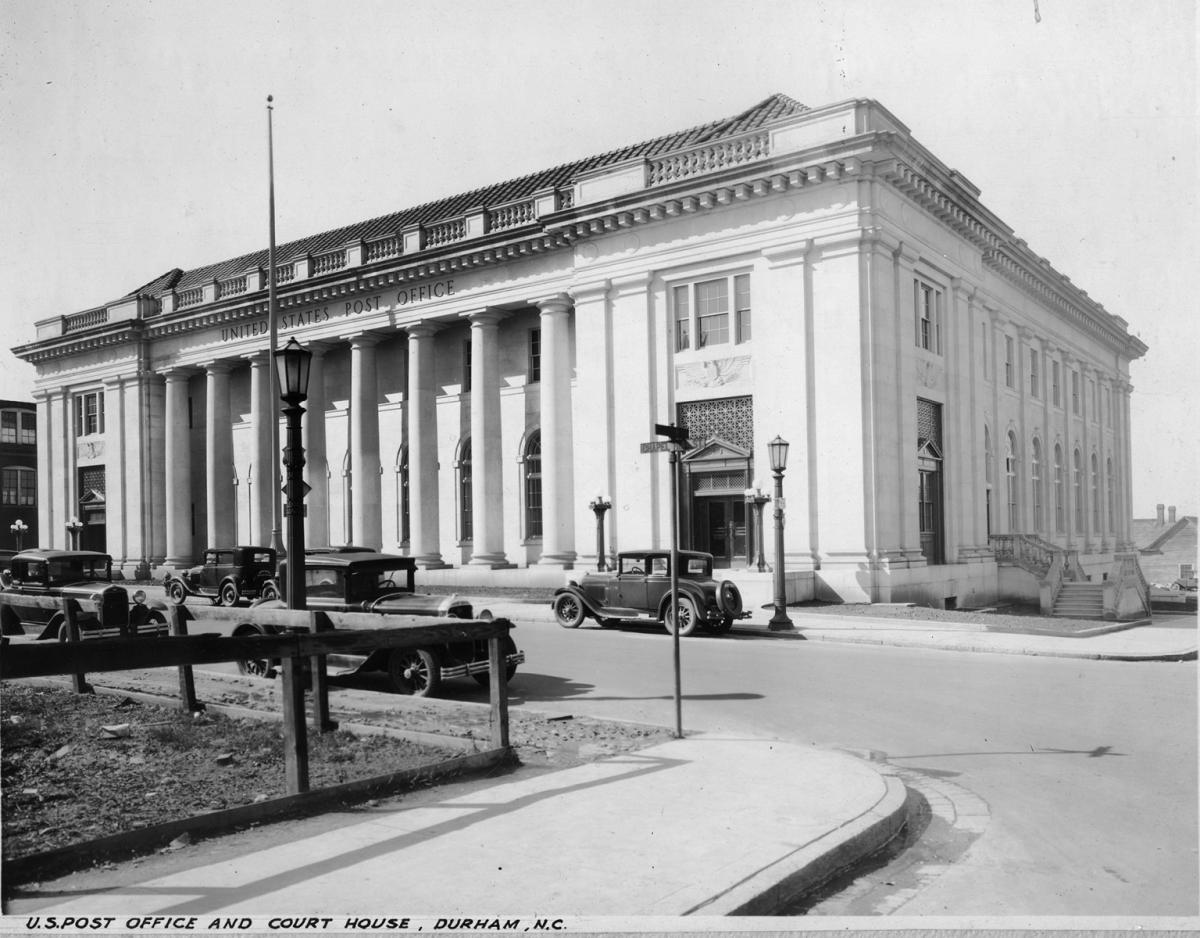
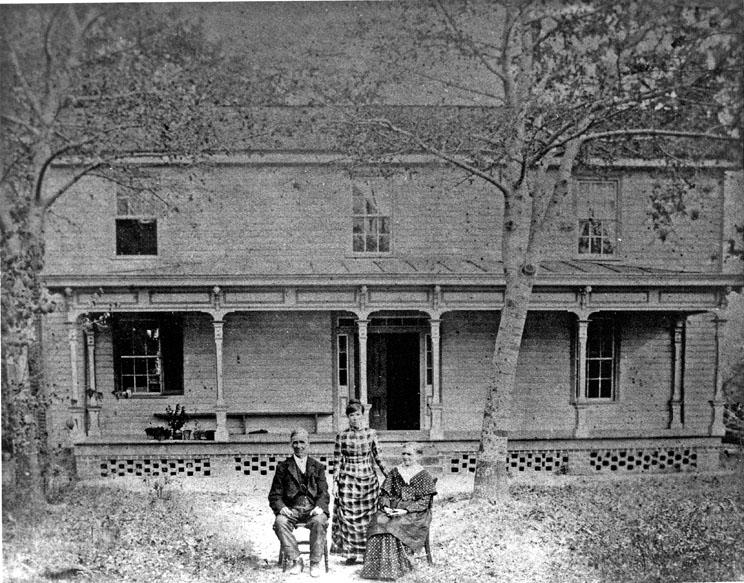
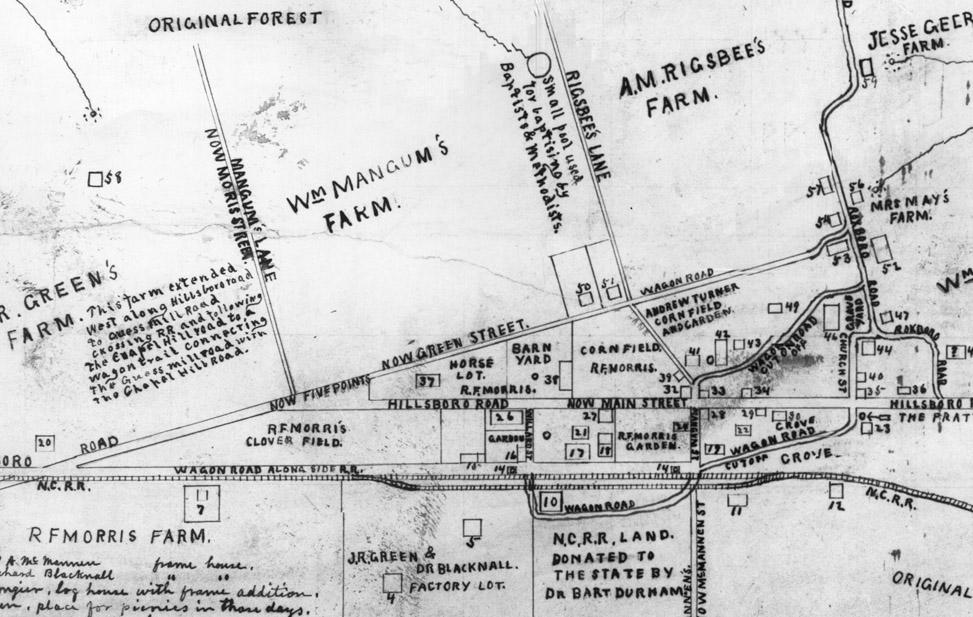
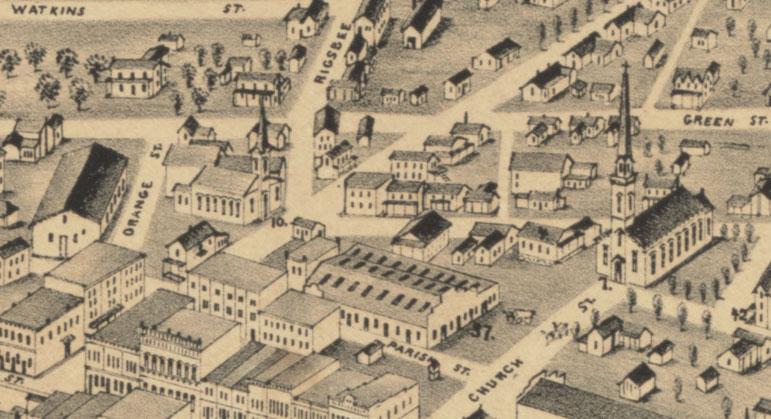
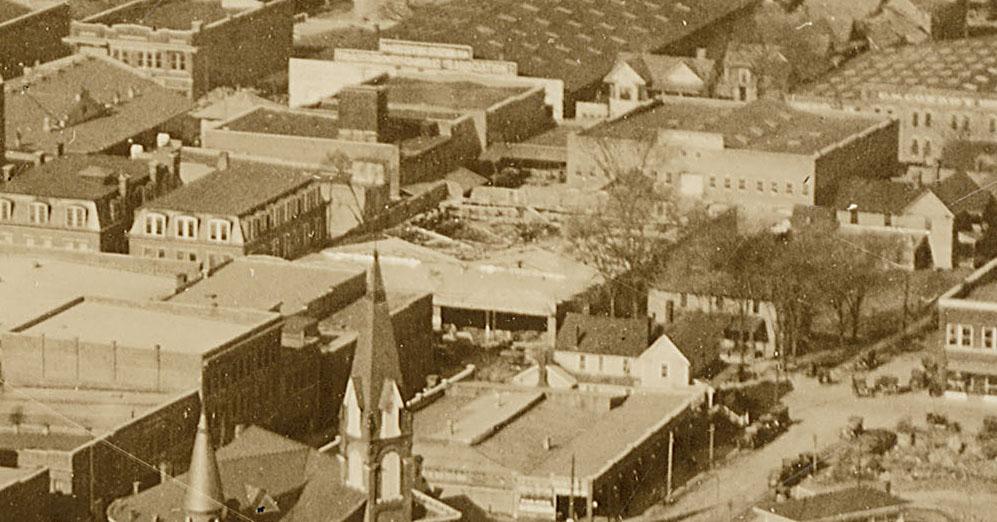
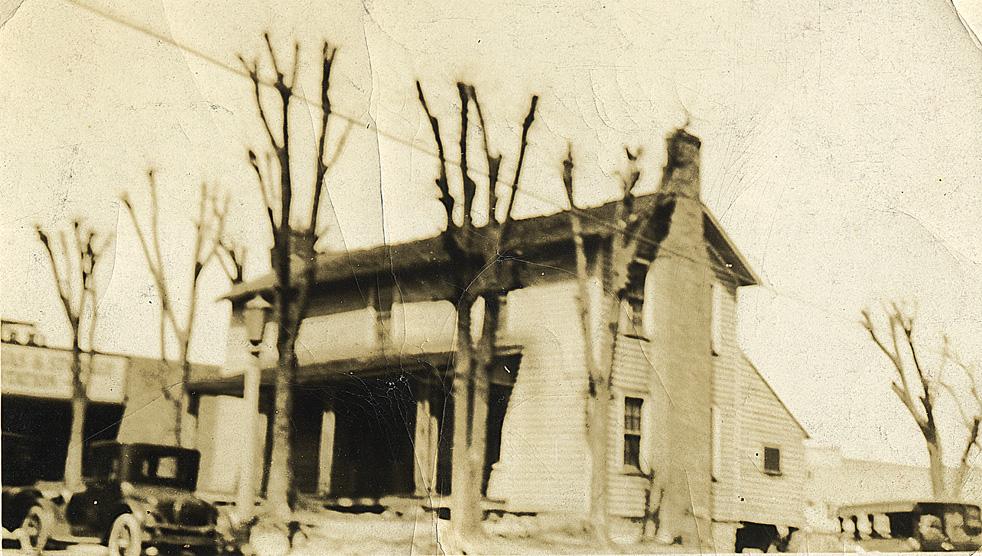
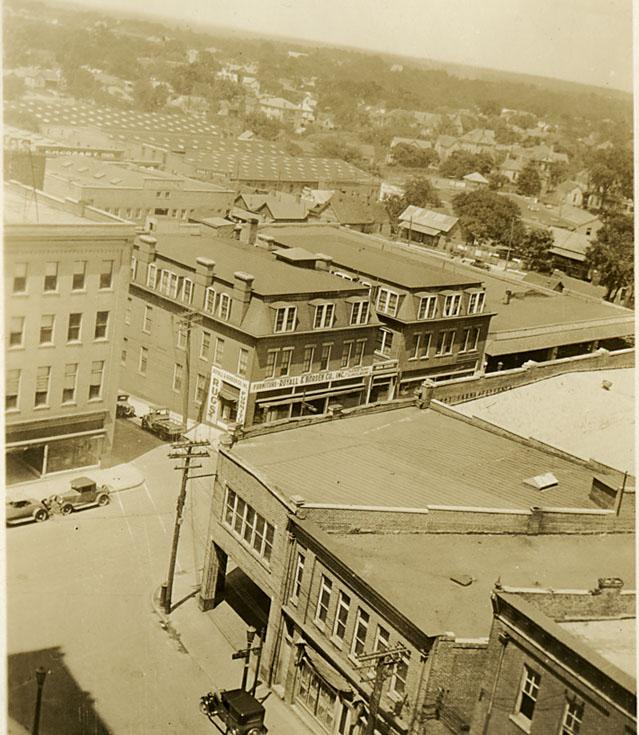
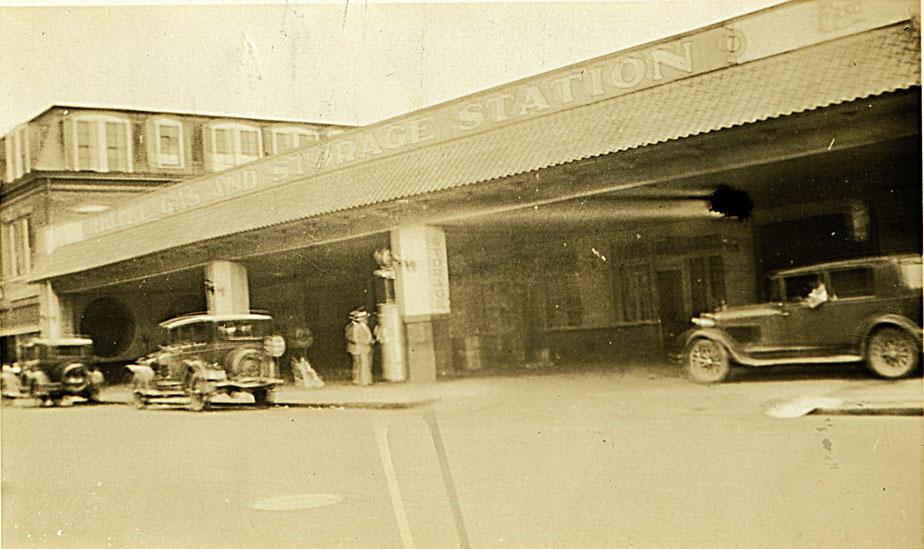
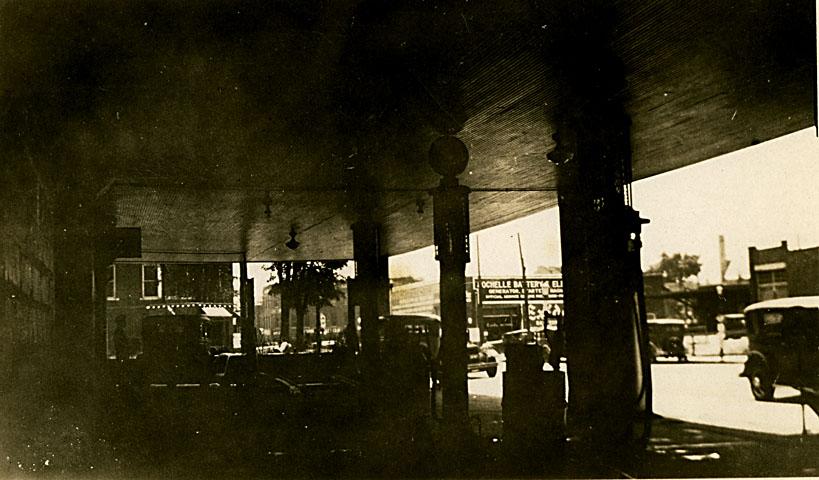
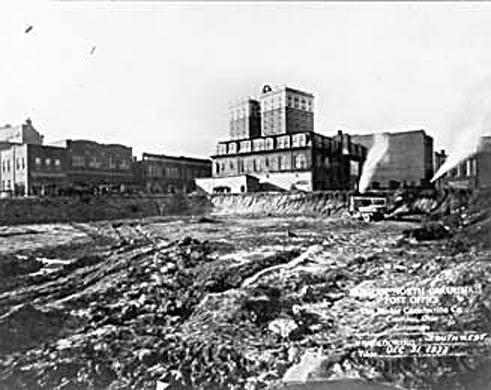
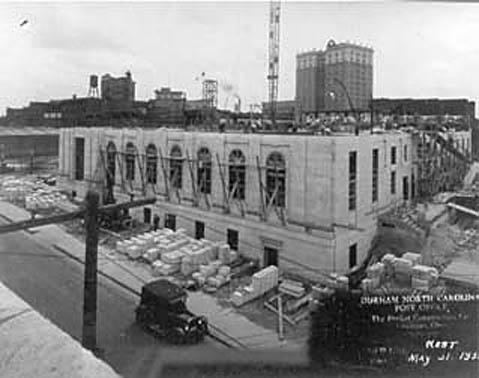
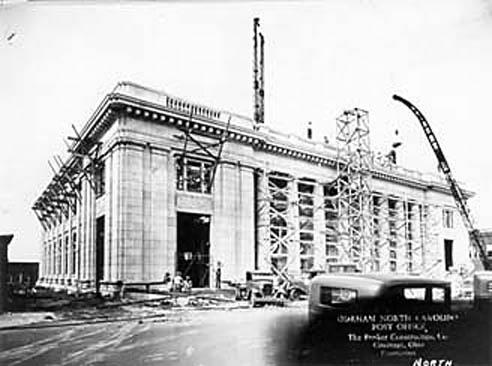
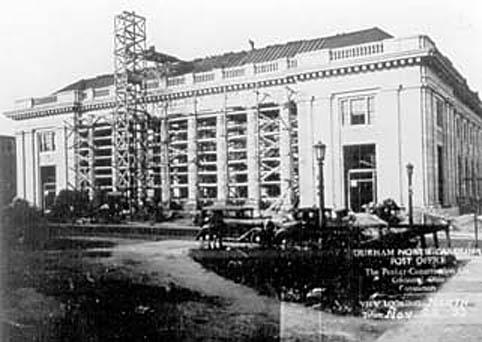
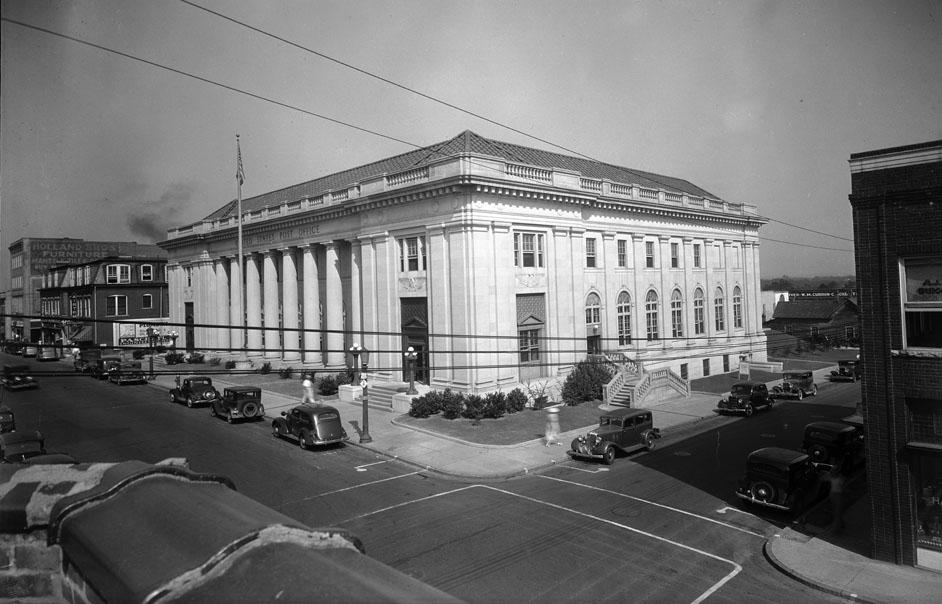
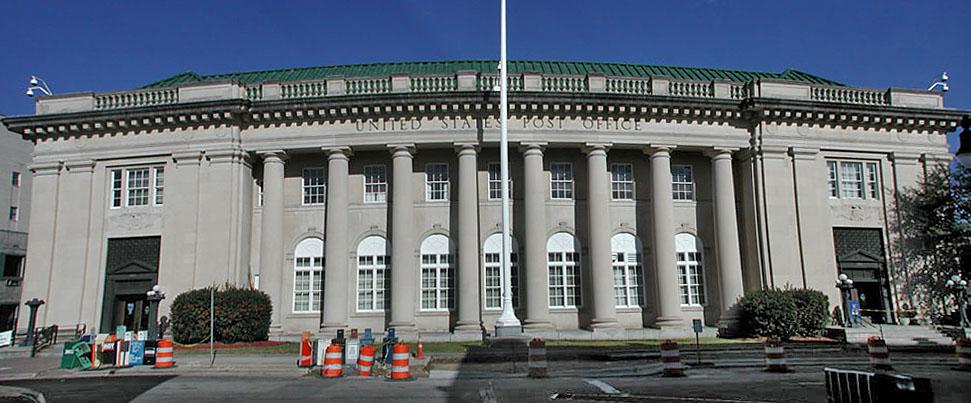
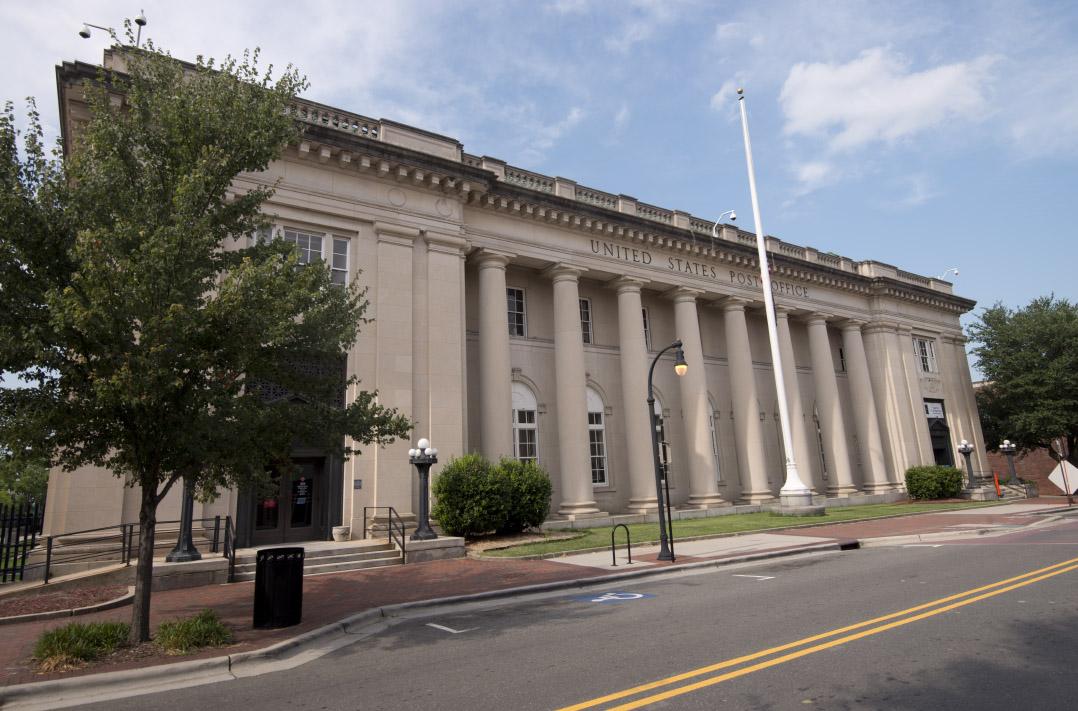
Comments
Submitted by Anonymous (not verified) on Wed, 3/7/2007 - 6:36am
Thanks for reminding me how great of a building the post office downtown is. I haven't been in there since I was a kid, think I'll mail a letter this week and take it there just to see it again.
Submitted by Andrew (not verified) on Wed, 3/7/2007 - 5:58pm
Gary:
The volunteers that lead the "Architecture and Landscape" downton walking tours echo your sentiment about the loss of architectural aesthetics and beauty. It's a pretty easy argument to make while standing in the Orange Street alleyway, asking tour-goers to compare the post office and the nearby City Hall. "Who knows what this more modern building on the right is used for? Can you find the front door?" are sucker punches, for sure, but no one can deny that the post office has a civic function (and two visible front doors).
While at the post office, we also mention the story about how the 1934 post office was paid for by the tax receipts on a single day's sale of Durham tobbaco. I need to locate the news article on this; I'm not sure if it refers to American Tobacco only, or to all of the tobacco being produced in town. The DCVB website states that it only took 15 minutes (see stop number 9 on the walking tour shown in this link).
--ASE.
Submitted by Gary (not verified) on Wed, 3/7/2007 - 6:17pm
Thanks Andrew - I had no idea there were architecture walking tours downtown; the linked pdf is a very nice resource.
City hall and the post office are a stark comparison of public buildings. City hall is about as bad as modernism can get, IMO, and I'll profile it (and the buildings that preceded it (soon.)
I had forgotten the tax receipts story, although I don't think I've ever read a detailed accounting of it. (i.e. were these things actually connected in some way, or is it just a nice way of juxtaposing the two?) I think the point is intriguing though, in that my understanding is that tobacco money was a bit of a cushion that insulated Durham from the worst effects of the Depression. Nothing like brokering an addictive product to get you through hard times, I suppose.
GK
Submitted by Andrew (not verified) on Thu, 3/8/2007 - 5:57pm
Gary:
The DCVB offers a bunch of PDFs for self-guided tours (including a driving tour of RTP). For a more personalized experience, Preservation Durham (nee the Historic Preservation Society of Durham) offers walking tours on Saturday mornings from April to November. The fourth Saturday of each month is devoted to the aforementioned "Architecture and Landscape".
I recently volunteered to be the walking tour guide coordinator, and have been thinking for some time about inviting you to become involved with the tours. Perry Pike (and others) developed a script several years ago -- and this is what the volunteers read from and refer to on the tours. I wonder if you would be interested in leading any of those or, because you have spent such a great deal of time researching on your own, in developing your own one-time, special tour of "Gary's Greatest Hits".
All of the tours (including the Tobacco Heritage and Civil Rights tours) begin at the farmer's market at 10am and are free of charge. The architecture tour goes past the DAC, east on Main, dog legs up to both Parrish and then to the corner of Corcoran and the Loop, then back on Main to Orange to Chapel Hill, and finishes with the Armonry and the Carolina Theatre. I'd be happy to show your the script or take you through a tour.
The best part about the tours is that each tour guide is encouraged to personalize their tour with whatever anectdotes or individual research they like best. (Durham's not into homogenized cheese, not even it's historical society.) For instance, I talk a little about the buildings that I love that no longer exist -- Washington Duke's old house -- and hotel, the Carrolina Hotel, Four Acres... A sort of "ghost" tour.
Any interest on your part?
--ASE.
Submitted by Gary (not verified) on Thu, 3/8/2007 - 10:55pm
Andrew
Thanks for the additional info on the tours. It's something I would be interested in doing, although I'm completely swamped for the next 6 weeks. But after that, maybe you could show me/I could tag along - ?
GK
Submitted by dcrollins (not verified) on Fri, 3/9/2007 - 9:28am
Brokering that "addictive product" paid for your fancy Dook degree -- I won't stand for that kind of talk!
Apropos of nothing, I've been in NY this week and had the opportunity to use the US's first fully automated parking garage (the one profiled on CNN the other day). It was about the coolest thing evah. It didn't fill up the gas tank, however -- a clear deficiency compared to the establishments you profiled in the other post.
The other neat thing from my trip is the mobile application that allows you to sell your on-street parking space.
We should get together next week when I'm back in town.
Submitted by Gary (not verified) on Fri, 3/9/2007 - 12:31pm
Dave
Ah, those cravings can get one a bit defensive, eh? Nah - I'll certainly give The Leaf credit; there wouldn't be anything to blog about here if it weren't for tobacco money. Actually, I meant it half-seriously - from a marketing perspective, how better to transform a non-essential good into an essential one? But I have to temper my economic respect with my public health/clinical excoriation.
I've read a bit about the cool intelligent parking systems using GIS/GPS in NYC. While the expense may only be justified in NY's unique environment, it points to a way to maximize efficiency of current capacity rather than expanding unnecessarily.
Let's get together. Things have/will crazy for me for awhile longer (trying to finish my Master's thesis) but hopefully we can find some time soon.
GK
Add new comment
Log in or register to post comments.